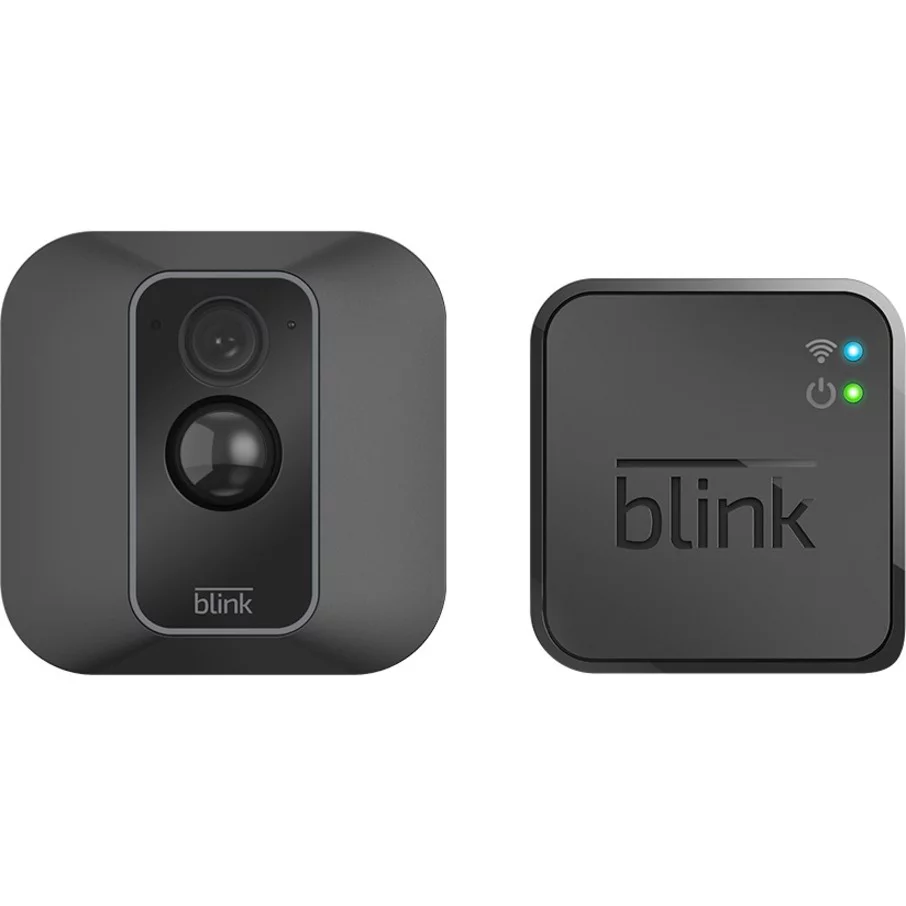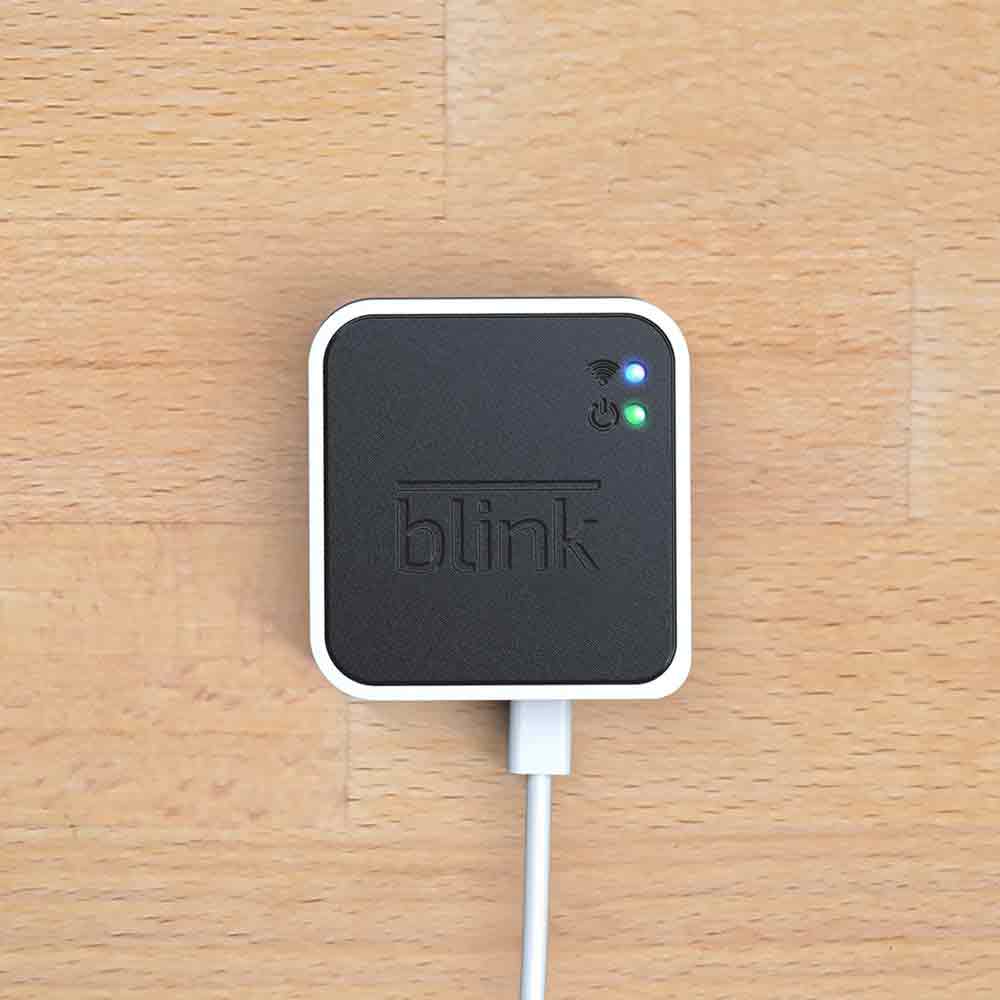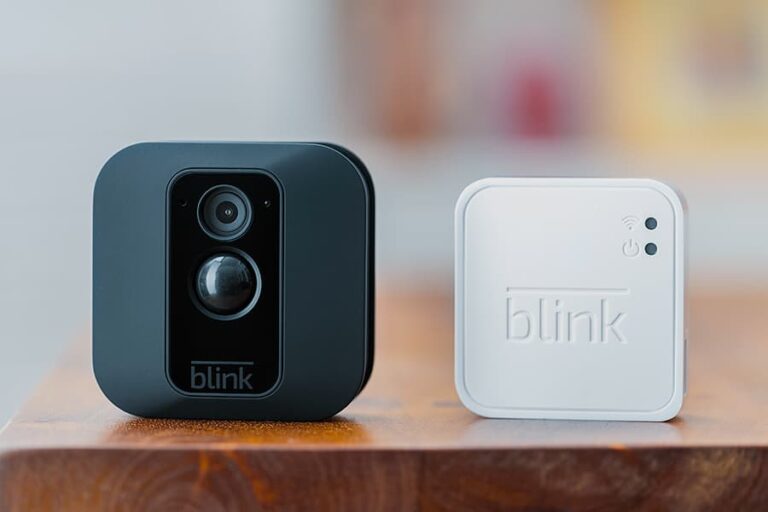Introduction
Blink cameras have revolutionized home security with their wireless design and motion-based recording capabilities. As homeowners seek smart and convenient surveillance solutions, understanding the connectivity options of Blink cameras becomes essential. In this introduction, we explore whether Blink cameras connect directly to Wi-Fi networks or rely on a sync module for data transmission and communication.
Wi-Fi-enabled Blink cameras make use of wireless connectivity to send data to the Blink cloud servers and the Blink app. During the initial setup process, users connect their Blink cameras directly to their home Wi-Fi network, allowing the cameras to access the internet for cloud storage, remote access, and real-time alerts.
While Blink cameras have Wi-Fi connectivity, they can also be integrated with a Blink Sync Module. The Sync Module acts as a central hub or bridge between the Blink cameras and the Wi-Fi network. It facilitates data transmission and communication between the cameras and the Blink cloud servers.

Do you need a sync module to use Blink cameras?
The Blink Wired Floodlight, Blink Video Doorbell, and Blink Mini do not require the Sync Module, although the Blink Outdoor and Indoor cameras must. Having a Sync Module with your doorbell improves battery life significantly.
Here’s a breakdown of using Blink cameras with or without a Sync Module:
Using Blink Cameras Without a Sync Module:
- Blink cameras, such as the Blink Indoor and Blink Outdoor models, can operate as standalone devices. During the initial setup, you will connect each camera directly to your Wi-Fi network individually.
- Cameras without a Sync Module can still record motion-triggered video clips and store them in the Blink cloud via your Wi-Fi network.
- You can access live view, review recorded clips, and receive motion alerts through the Blink app without a Sync Module.
- Using Blink cameras without a Sync Module is suitable for smaller installations with one or a few cameras located within close proximity to the Wi-Fi router.
Using Blink Cameras with a Sync Module:
- The Blink Sync Module serves as a central hub or bridge between the Blink cameras and your Wi-Fi network.
- The Sync Module can improve overall system performance and reliability by extending the range between cameras and the Wi-Fi router, especially for cameras placed at a distance from the router.
- It enables additional features like local storage through USB devices, allowing you to save recorded clips locally without relying solely on cloud storage.
- A Sync Module can support multiple Blink cameras, making it more convenient to manage and control multiple cameras from a single interface in the Blink app.
Are Blink cameras connected to Wi-Fi?
The Blink Sync Module requires a solid internet connection via WiFi in order to operate properly in the first place.
During the initial setup process, Blink cameras are connected to your home Wi-Fi network to access the internet and communicate with the Blink cloud servers. This connection allows the cameras to perform various essential functions, including:
Motion Detection and Recording
The Wi-Fi connection enables Blink cameras to detect motion using their built-in motion sensors and record short video clips when motion is detected within their field of view.
Cloud Storage
Recorded video clips are sent to the Blink cloud servers via the Wi-Fi connection for cloud storage. The Blink cloud stores the recorded clips securely and makes them accessible to users through the Blink app or web portal.
Remote Access
The Wi-Fi connection enables users to access their Blink cameras remotely through the Blink app, providing real-time access to live views, recorded clips, and camera settings.
Firmware Updates
The Wi-Fi connection makes it possible to send firmware updates to the Blink cameras, guaranteeing that they have the most recent programs and features.
What is the purpose of the Blink Sync Module?
Conveniently control all of your Blink devices right from the Blink Home Monitor app with the Blink Sync Module 2. The Sync Module 2 connects up to 10 of any Blink Indoor, Blink Outdoor, XT2, XT, Video Doorbell and Blink Mini devices (not required for Mini).
Some features and benefits:
Data Transmission and Communication
The Sync Module facilitates data transmission between Blink cameras and the Blink cloud servers. When a Blink camera records a motion-triggered video clip, the Sync Module ensures that the clip is securely sent to the Blink cloud for storage and remote access through the Blink app or web portal.
Wi-Fi Range Extension
The Sync Module can improve the Wi-Fi range between your Blink cameras and your home Wi-Fi router. This is particularly useful for cameras placed at a distance from the router, as the Sync Module acts as an intermediary, ensuring reliable data communication between the cameras and the Wi-Fi network.
Multiple Camera Support
The Sync Module allows you to connect multiple Blink cameras to your Blink account. This makes it easier to manage and control multiple cameras from a single interface in the Blink app, simplifying the process of monitoring and accessing footage from different cameras.
Local Storage (Blink XT2)
The Blink Sync Module has an additional benefit for Blink XT2 cameras. It provides a USB port that can be used to connect a USB flash drive for local storage. With this feature, you can save recorded video clips directly to the USB drive, providing an extra layer of backup and storage in case of internet disruptions or limited cloud storage.
How do Blink cameras connect?
How to Set Up Your Blink Smart Cameras
- Remove the back cover of your Blink camera.
- Then insert two AA batteries.
- Next, open the Blink Home Monitor app and tap the plus sign.
- Then choose your Blink camera model.
- Next, scan the QR code inside the Blink camera.
- Then wait for your camera to update and tap Next.
Blink cameras connect to your home Wi-Fi network using a simple and straightforward setup process. Here’s how Blink cameras connect:
Initial Setup
To begin, you need to install the Blink Home Monitor app on your smartphone or device. The app is available for iOS and Android devices and acts as the central control hub for your Blink cameras.
Camera Placement
Choose the locations where you want to install your Blink cameras. Blink cameras are designed to be placed indoors or outdoors, and they are weather-resistant for outdoor use. Ensure that your chosen locations have a Wi-Fi signal strong enough for reliable camera communication.
Power On the Camera
Install batteries or connect the Blink camera to a power source, depending on the camera model. Some Blink cameras are battery-powered, while others, like the Blink XT2, can use an AC power adapter. Once powered on, the camera’s LED will blink blue, indicating that it is ready for setup.
Add Camera to the App
Launch the Blink Home Monitor app and follow the on-screen instructions to add your camera to the app. The app will guide you through the process of connecting the camera to your home Wi-Fi network.
Scan QR Code
During the setup process, you will need to scan the QR code located on the camera using the app. This QR code contains the camera’s unique identification information, allowing the app to pair the camera with your Blink account.
Connect to Wi-Fi
The app will prompt you to select your home Wi-Fi network and enter the network’s password. The Blink camera will then establish a connection to your Wi-Fi network, enabling data transmission and communication between the camera and the Blink cloud servers.

What happens if you don’t have a sync module for Blink?
You can’t use it to record live view, but all motion-triggered alerts will be saved locally and can be accessed at any time through the Blink app. If you don’t have the Sync Module 2, then you’ll either have to rely on only getting notifications and having live view, or subscribe to one of the Blink plans.
If you don’t have a Blink Sync Module, you can still use Blink cameras as standalone devices, but certain features and benefits associated with the Sync Module will not be available. Here’s what happens if you don’t have a Sync Module for Blink:
Individual Camera Setup
Without a Sync Module, each Blink camera will need to be set up individually and connected directly to your home Wi-Fi network. During the initial setup process, you will add each camera to the Blink Home Monitor app one by one and connect them to your Wi-Fi network individually.
No Central Hub
The Sync Module acts as a central hub or bridge between Blink cameras and your Wi-Fi network. Without a Sync Module, cameras will communicate directly with your Wi-Fi network but won’t have the benefits of a centralized communication hub.
Wi-Fi Range Considerations
Since cameras connect directly to Wi-Fi without the Sync Module, the distance between your Wi-Fi router and each camera becomes more critical. You need to ensure that the Wi-Fi signal is strong and stable enough to support reliable communication between the cameras and the Blink cloud servers.
No Wi-Fi Range Extension
The Sync Module can extend the Wi-Fi range between cameras and your Wi-Fi router, improving connectivity for cameras placed at a distance from the router. Without a Sync Module, the cameras will rely solely on the Wi-Fi signal strength at their specific locations.
No Local Storage (Blink XT2)
The Sync Module provides a USB port for local storage on Blink XT2 cameras. Without a Sync Module, Blink XT2 cameras won’t have the option for local storage using a USB flash drive.
How many SYNC modules do I need for Blink?
That means if you have 20 Blink cameras installed in your home, you’ll require 2 modules. If you have 30, you’ll need 3 modules, and so on. You can manage multiple Sync Modules using the Blink app.
The number of Sync Modules you need for Blink cameras depends on the size of your Blink camera setup and your specific requirements. In most cases, you can use a single Sync Module to support multiple Blink cameras. However, there are a few factors to consider when determining the number of Sync Modules needed:
Number of Cameras
Blink cameras can operate independently and connect directly to your Wi-Fi network without a Sync Module. If you have only one or a few cameras, you may not need a Sync Module at all. Each camera can function on its own and communicate with the Blink cloud servers individually.
Camera Placement and Wi-Fi Range
If you have multiple Blink cameras placed throughout your property, the Wi-Fi range between each camera and your Wi-Fi router becomes a consideration. A Sync Module can help extend the Wi-Fi range and improve connectivity, especially for cameras that are located at a distance from the router.
Centralized Management
Using a Sync Module allows for centralized management of multiple Blink cameras through the Blink Home Monitor app. If you have several cameras and want a single interface to control and monitor all of them, a Sync Module becomes more beneficial.
Local Storage (Blink XT2)
If you have Blink XT2 cameras and want to use local storage through a USB flash drive, you will need a Sync Module, as it provides the USB port for this feature.
In summary, you may need a Sync Module for your Blink camera setup if:
- You have multiple cameras placed throughout your property, and you want to improve Wi-Fi connectivity between the cameras and your Wi-Fi router.
- You prefer centralized management of multiple Blink cameras through the Blink Home Monitor app.
- You have Blink XT2 cameras and want to utilize local storage through a USB flash drive.
How far can Blink cameras be from Wi-Fi?
100 ft.
In a typical situation (single building, no unusually dense construction materials), the Sync Module should be able to communicate with Blink cameras up to 100 ft. (30m) away in any direction. We recommend keeping the Sync Module near your wireless router for best signal strength.
Blink cameras can be placed at a considerable distance from your Wi-Fi router, but there are some limitations to consider.
Wi-Fi Signal Strength
The most critical factor in determining the distance a Blink camera can be from Wi-Fi is the strength of your Wi-Fi signal. A strong Wi-Fi signal will enable the camera to communicate effectively with the router, even if it is located further away. The closer the camera is to the Wi-Fi router, the stronger the signal will be, leading to better performance and connectivity.
Obstructions
Physical obstructions, such as walls, floors, furniture, and other objects, can interfere with Wi-Fi signals and reduce their range. Thick walls and metal structures can be particularly challenging for Wi-Fi signals to penetrate. If there are multiple obstructions between the camera and the Wi-Fi source, the effective range may be limited.
Camera Model
Different Blink camera models may have varying Wi-Fi performance and connectivity capabilities. Some camera models may have more robust Wi-Fi receivers, allowing them to maintain a reliable connection over longer distances.
What Wi-Fi is Blink compatible with?
Wi-Fi Network Requirements:
2.4GHz 802.11b/g/n. Non-cellular 2.4 GHz Wi-Fi network: Blink devices are not compatible with MiFi devices or personal Wi-Fi hotspots provided by cellular network providers such as T-Mobile, Verizon, etc.
Here are some key points to consider regarding Wi-Fi compatibility with Blink cameras:
Single-Band vs. Dual-Band Routers
If you have a dual-band router (supports both 2.4 GHz and 5 GHz), ensure that you connect your Blink cameras to the 2.4 GHz network, as the cameras do not work on the 5 GHz band.
Wi-Fi Range Extenders
If you are using Wi-Fi range extenders to expand your Wi-Fi coverage, make sure that the range extender is broadcasting on the 2.4 GHz band to maintain compatibility with Blink cameras.
Wi-Fi Security
Blink cameras support standard Wi-Fi security protocols, including WEP, WPA, and WPA2. Ensure that your Wi-Fi network is secured with one of these protocols to protect your camera’s connection.
Wi-Fi Signal Strength
The distance between your Blink cameras and the Wi-Fi router, as well as the presence of physical obstructions, can affect Wi-Fi signal strength. Consider the camera’s placement to maintain a reliable Wi-Fi connection.

Conclusion
Blink cameras can connect to both Wi-Fi networks and the Blink Sync Module, providing users with flexibility and versatility in their home security setup. The Wi-Fi connection is the primary method of communication for Blink cameras, allowing them to operate as standalone devices, connect directly to the home Wi-Fi network, and transmit data to the Blink cloud servers for storage and remote access.
When connecting Blink cameras to Wi-Fi networks, users can enjoy motion detection, recording, live view, and motion alerts through the Blink app without the need for a Sync Module. This direct Wi-Fi connection makes Blink cameras easy to set up and use, providing wireless surveillance capabilities with minimal complexity.
On the other hand, the optional Blink Sync Module serves as a valuable accessory that enhances the camera system’s performance and adds extra features. It acts as a central hub, facilitating communication between multiple Blink cameras and the Wi-Fi network. The Sync Module allows for improved Wi-Fi range extension, making it particularly beneficial for larger installations or when cameras are placed at a distance from the Wi-Fi router.

